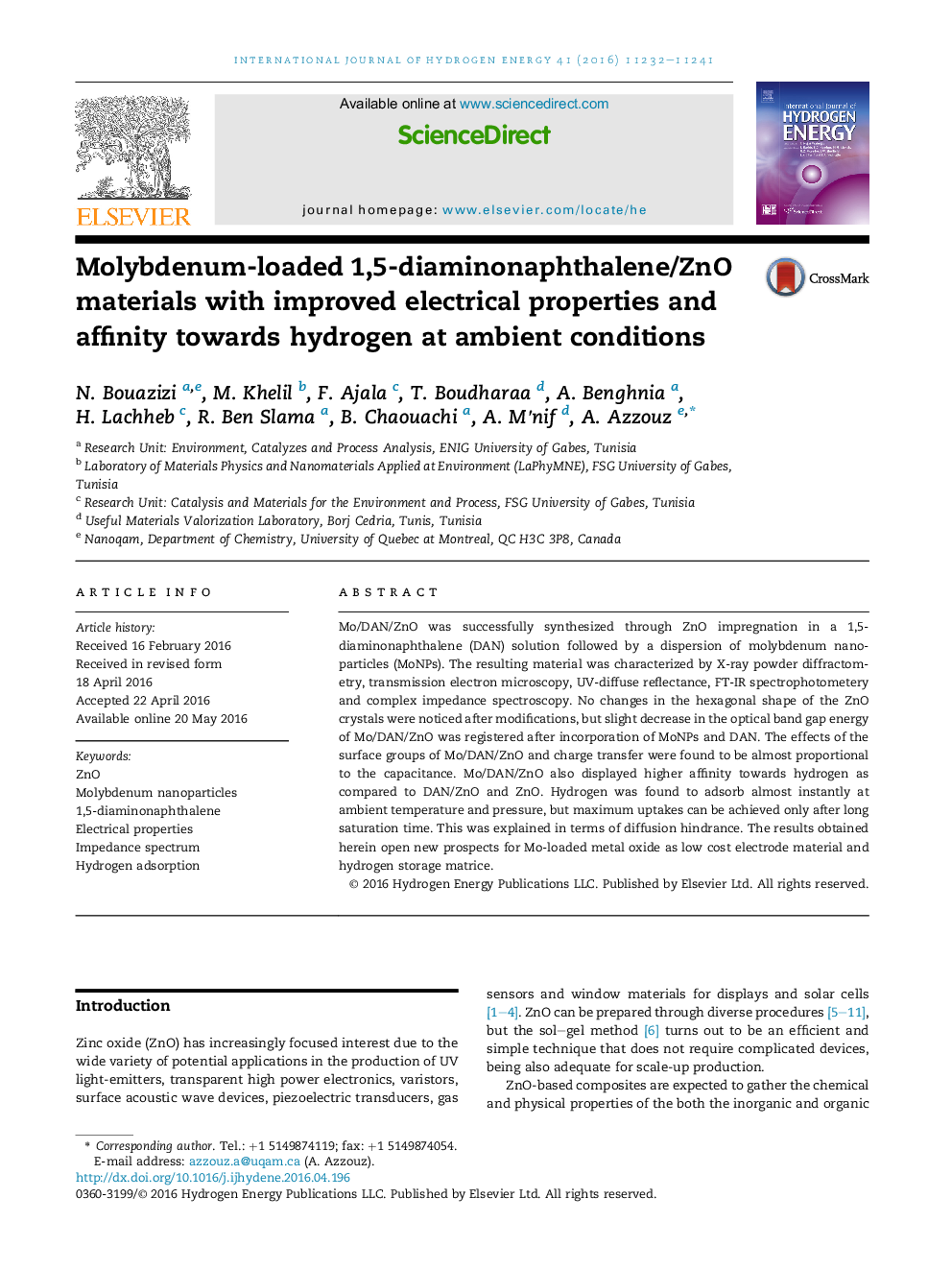| Article ID | Journal | Published Year | Pages | File Type |
|---|---|---|---|---|
| 1269555 | International Journal of Hydrogen Energy | 2016 | 10 Pages |
•Molybdenum induces electrical properties in Diaminonaphthalene-modified ZnO.•The conductivity and capacitance can be tailored according to molybdenum dispersion.•Mo particles improve the affinity of ZnO towards hydrogen at ambient conditions.•Hydrogen adsorption involves both physical and chemical interactions.•These properties make Mo/DAN/ZnO to be regarded as potential hydrogen sensor.
Mo/DAN/ZnO was successfully synthesized through ZnO impregnation in a 1,5-diaminonaphthalene (DAN) solution followed by a dispersion of molybdenum nanoparticles (MoNPs). The resulting material was characterized by X-ray powder diffractometry, transmission electron microscopy, UV-diffuse reflectance, FT-IR spectrophotometery and complex impedance spectroscopy. No changes in the hexagonal shape of the ZnO crystals were noticed after modifications, but slight decrease in the optical band gap energy of Mo/DAN/ZnO was registered after incorporation of MoNPs and DAN. The effects of the surface groups of Mo/DAN/ZnO and charge transfer were found to be almost proportional to the capacitance. Mo/DAN/ZnO also displayed higher affinity towards hydrogen as compared to DAN/ZnO and ZnO. Hydrogen was found to adsorb almost instantly at ambient temperature and pressure, but maximum uptakes can be achieved only after long saturation time. This was explained in terms of diffusion hindrance. The results obtained herein open new prospects for Mo-loaded metal oxide as low cost electrode material and hydrogen storage matrice.
Graphical abstractFigure optionsDownload full-size imageDownload as PowerPoint slide
